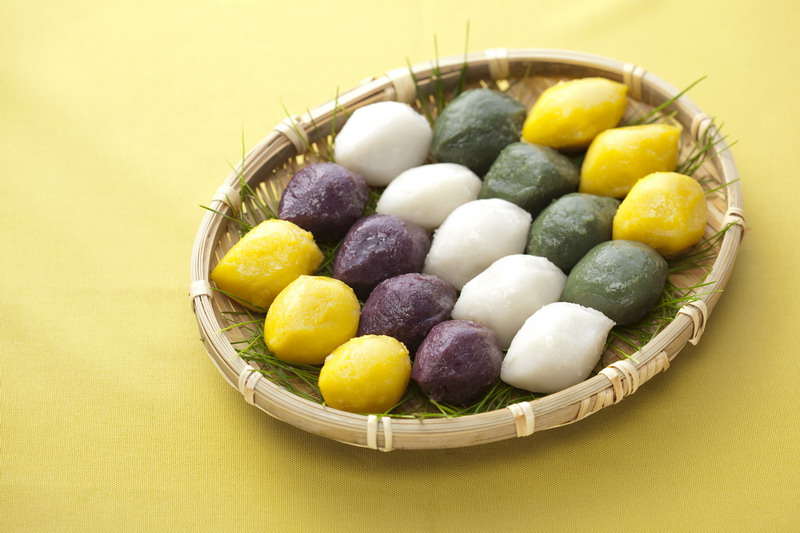Stories Behind Korean Rice Cakes (Tteok)

Written by Cho Namhee
Wherever there is rice involved in a culture, there is usually rice cake. While rice cakes are prevalent in Asia, Korean tteok (떡) is unique to the Korean culture. Though, nowadays, rice cake shops have drastically decreased since the introduction of Western bakeries and baked goods, and as a consequence, the total national rice consumption is plummeting year after year. Demands for tteok skyrocket near Korean traditional holidays such as the New Year and Chuseok, the harvest moon festival. It is understandable from the fact that flour was only introduced to Korea a few decades ago, and rice was the previous dominant staple grain that was highly valued and used in so many ways.
There are countless tteok recipes that have been passed down through the ages, from generation to generation. Instead of introducing their varieties and ingredients, this month’s Korean food article will focus on sayings and proverbs related to tteok to see how they were regarded and understood among Koreans in the past.
웬 떡이야! (What tteok is this!)
This expression means “lucky me” and is used when one gets unexpected good fortune. We can tell from this expression that tteok was not served often, and that it would be surprising if it were to be served on a day other than a special day.
밥 위에 떡 (Tteok on top of rice)
This saying is used when something good is topped with something even better. It can be inferred that rice cake was valued even more than rice.
떡 줄 사람은 꿈도 안 꾸는데 김칫국부터 마신다 (Don’t count your chickens before they are hatched.)
This proverb literally means to drink one’s kimchi soup (and wait for the tteok to be served) when there is no one even dreaming of giving out any tteok. This saying portrays the eagerness of having tteok in the past.
남의 떡에 설 쇤다 (Spend the New Year’s with other’s tteok)
얻은 떡이 두레반이다 (Getting rice cakes covering a round table (두레반))
It was customary to have tteok with family and relatives on special days. If the family was wealthy enough, they made enough tteok not only for their families, but also the neighbors. These two sayings portray how common it was to share tteok during traditional holidays. When one moved into a new house, it was also customary to share siru-tteok (시루떡), steamed rice cake garnished with adzuki beans, with the new neighbors.
In addition to the above sayings, here are some fun facts about the special tteok made and eaten on Chuseok. Songpyeon (송편, half-moon-shaped rice cakes) was used as a means of fortune-telling. The shapes of these songpyeon told single women about their future husbands, and pregnant women about their future children. Pregnant women could also guess their babies’ gender by tasting cooked songpyeon.
It is unfortunate to see the rice cake shops being replaced by bakeries nowadays. However, since there are still endeavors being made to keep the tradition, Korean rice cake culture will not disappear. Happy Chuseok and enjoy your holidays filled with rice cakes!
The Author
Cho Namhee currently studies communication at Chonnam National University.







